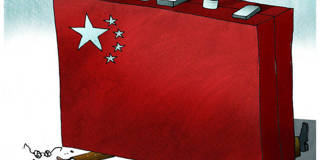In recent years, easy credit and lopsided policies have generated significant risk in China's banking sector, raising concerns about non-performing loans – particularly those that are hidden from banks' balance sheets. But mechanisms for dissolving banks' troubled assets carry serious risks of their own.
BEIJING – Back in 2009, in the midst of the global recession, China’s government launched a massive economic-stimulus package that bolstered GDP growth by fueling a surge in bank lending. But now it is becoming increasingly apparent to policymakers and investors that easy credit and lopsided policies have generated significant risk for China’s banking system. Indeed, amid rising concern about banks’ troubled assets, defusing financial risk has become the authorities’ central goal.

BEIJING – Back in 2009, in the midst of the global recession, China’s government launched a massive economic-stimulus package that bolstered GDP growth by fueling a surge in bank lending. But now it is becoming increasingly apparent to policymakers and investors that easy credit and lopsided policies have generated significant risk for China’s banking system. Indeed, amid rising concern about banks’ troubled assets, defusing financial risk has become the authorities’ central goal.